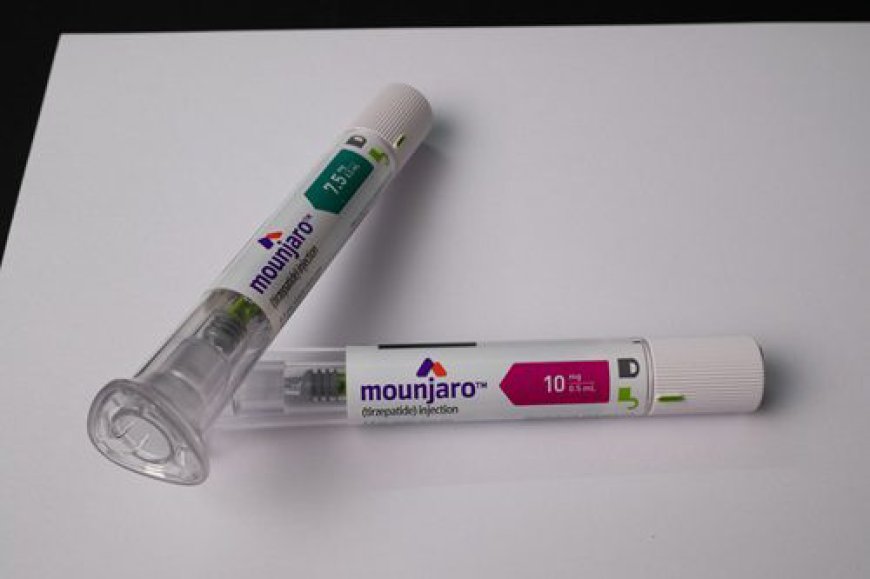Mounjaro manufacturing process: How it's made
Explore Mounjaro injection Dubai for Type 2 Diabetes & Weight Management. Learn about cost & how this FDA-approved medication can help you.

Mounjaro Injection Dubai, the brand name for tirzepatide, is a medication that has gained significant attention in the field of diabetes management and obesity treatment. As a synthetic peptide, its production involves a complex manufacturing process that ensures the final product meets the required safety and efficacy standards. In this article, we will explore the various stages involved in the manufacturing of Mounjaro, detailing the steps from initial synthesis to the final formulation.
1. Peptide Synthesis
The production of Mounjaro begins with the synthesis of tirzepatide, which is a synthetic analog of the human incretin hormones, GLP-1 (glucagon-like peptide-1) and GIP (gastric inhibitory polypeptide). The peptide synthesis typically employs solid-phase peptide synthesis (SPPS), a method that allows for the efficient and controlled assembly of amino acids into a peptide chain.
Solid-Phase Peptide Synthesis (SPPS)
-
Amino Acid Selection: The process starts with selecting the appropriate amino acids, which are the building blocks of the peptide. For tirzepatide, specific amino acids are chosen to mimic the activity of GLP-1 and GIP.
-
Resin Attachment: The first amino acid is attached to a solid support resin. This resin serves as a foundation for building the peptide chain, allowing for easy separation once synthesis is complete.
-
Sequential Coupling: Each subsequent amino acid is added to the growing chain through a series of coupling reactions. Each step is carefully monitored and optimized to ensure high purity and yield. Protecting groups are used to prevent unwanted reactions during synthesis.
-
Cleavage and Purification: Once the full peptide chain is assembled, it is cleaved from the resin. The resulting crude peptide mixture contains impurities that must be removed. High-performance liquid chromatography (HPLC) is typically employed to purify the peptide, ensuring that the final product meets the required specifications.
2. Characterization and Quality Control
After purification, the next crucial step involves characterizing the synthesized peptide. Various analytical techniques are employed to confirm the identity, purity, and structural integrity of tirzepatide.
Analytical Techniques
-
Mass Spectrometry (MS): This technique is used to determine the molecular weight of the peptide and confirm its amino acid sequence.
-
Nuclear Magnetic Resonance (NMR) Spectroscopy: NMR provides detailed information about the structure of the peptide, helping to ensure that it has the correct conformation.
-
HPLC Analysis: HPLC is also utilized to assess the purity of the peptide. A high purity level is essential for safety and efficacy.
Quality control measures are rigorously applied at this stage to comply with regulatory standards. The characterization data is crucial for ensuring that the peptide can proceed to the next phases of formulation and clinical trials.
3. Formulation Development
Once tirzepatide has been synthesized and characterized, it enters the formulation development phase. This involves creating a stable and effective dosage form that can be administered to patients.
Formulation Components
-
Stabilizers and Excipients: Various stabilizers and excipients are incorporated into the formulation to enhance the stability and bioavailability of the peptide. These can include buffers, tonicity agents, and preservatives.
-
Delivery Method: Mounjaro is formulated for subcutaneous injection, which necessitates careful consideration of the delivery device. The formulation must be compatible with prefilled syringes or pens that facilitate patient self-administration.
-
Stability Studies: Extensive stability studies are conducted to ensure that the formulation maintains its potency and safety over its intended shelf life. These studies examine the effects of temperature, light, and other environmental factors on the product.
4. Manufacturing Scale-Up
Following successful formulation development, the manufacturing process is scaled up to produce Mounjaro in larger quantities. This stage involves transitioning from laboratory-scale production to commercial-scale manufacturing.
Good Manufacturing Practices (GMP)
-
GMP Compliance: The production facilities must adhere to Good Manufacturing Practices (GMP) guidelines set by regulatory authorities. This ensures that the manufacturing process is consistent, controlled, and capable of producing high-quality products.
-
Batch Production: Mounjaro is produced in batches, with each batch undergoing stringent quality checks. The batch records are meticulously documented to maintain traceability.
5. Packaging and Distribution
Once the final product has been manufactured and quality-tested, it moves on to packaging and distribution.
Packaging Considerations
-
Tamper-Evident Packaging: Mounjaro is packaged in tamper-evident containers to ensure safety and integrity.
-
Labeling: The labeling includes important information about dosage, administration, storage conditions, and expiration dates. Clear instructions are provided for healthcare providers and patients.
-
Cold Chain Logistics: Given that Mounjaro is a peptide that may require refrigeration, cold chain logistics are implemented to maintain the required temperature during transportation and storage.
6. Regulatory Approval
The final step in the manufacturing process is obtaining regulatory approval. Mounjaro must undergo a series of clinical trials to demonstrate its safety and efficacy before it can be marketed. The data from these trials, along with the manufacturing and quality control documentation, is submitted to regulatory agencies such as the U.S. Food and Drug Administration (FDA) for review.
Conclusion
The manufacturing process of Mounjaro is a complex and multifaceted procedure that involves advanced technologies and stringent quality control measures. From the initial peptide synthesis to final packaging, each step is designed to ensure that the medication is safe, effective, and of the highest quality. As the demand for innovative diabetes and obesity treatments continues to grow, understanding the manufacturing processes behind these medications becomes increasingly important for both healthcare providers and patients.
